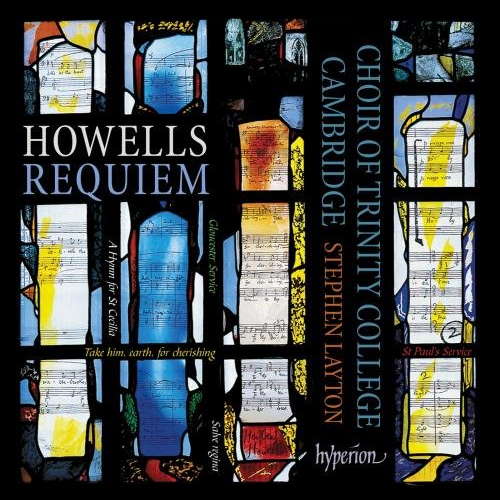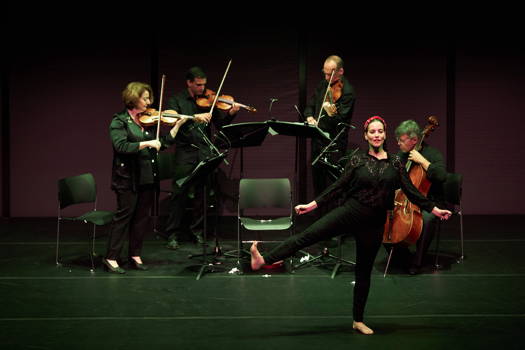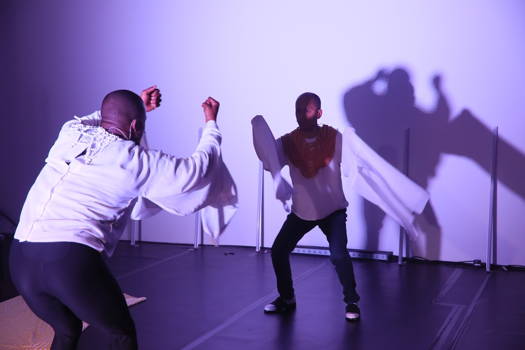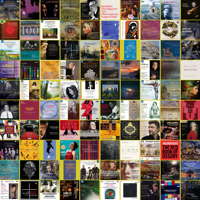 SPONSORED: CD Spotlight. Beautifully Apt - Choral music by Herbert Howells, heard by Robert Anderson.
SPONSORED: CD Spotlight. Beautifully Apt - Choral music by Herbert Howells, heard by Robert Anderson.
All sponsored features >>
A Compelling New Format?
ADAM J SACKS reports on two recent
dance performances in Hong Kong
which potentially reimagine the role
of classical music in contemporary settings
The Tai Kwun Centre for Heritage & Arts, a compound that once housed the former Central Police Station, has quickly become the major mecca for the arts in Hong Kong. The current dance season is entirely in line with such unlikely transformations under the theme of 'Break the Boundary and Dance your Identity'. Transforming classical music into performance art, 16 Strings and One Body [seen 27 September 2019], is indeed a boundary defying collaboration between the Toscanini String Quartet and the choreographer Renana Raz, both hailing from Israel. This spasmodic marriage of translation and collaboration features the dancer enacting the music in and about the stage weaving among the traditionally placed members of the quartet. A post-modern pantomine, while the repertoire was entirely mainstream classical, Rameau, Ravel and Beethoven, the phsyical repertoire of the dancer veered wildly from flamenco, to twerking, Irish jig, to horse gallop.

A scene from '16 Strings and One Body' by Renana Raz at Hong Kong's Tai Kwun Centre for Heritage & Arts. Photo © 2019 Winnie Yeung
Moments of real synthesis are fleeting, such as the floor convulsions during the contemplative moments of Ravel. Consistent however is the conceptual achievement in suggesting what could very well be a new hybrid art form, one which potentially could overcome the challenge of competition between the forms. Planting an additional dancer amidst the audience and the choice of streetwear attire for the dancers compound the unfortunate distracting effect. Crafting a narrative whole in the choreography among three disparate works of music is only hinted at, but points the way to what could be not only a major breakthrough artistically, but a potentially compelling new format to reimagine the role of classical music in contemporary settings.
Renana clearly delights in subverting the decorum and earnestness that too often envelops classical performance. She provides nothing less than a phsyical critique of his Op 8, No 4, her profane movements mocking the solemnity as false, replete with tiger roars, and mimed jagged conducting. Expanding formats and testing boundaries informed by more than little humor is also characteristic of Enoch Cheng's Morphing featured at Tai Kwun on 20 October 2019. A South African and Taiwanese dancer, act out chapters in a story of migration of his own family, refugees from Mao's China, while the choreographer serves as a kind of laconic MC, à la vaudeville, interspersing wry asides with the audience.

A scene from Enoch Cheng's 'Morphing' at Hong Kong's Tai Kwun Centre for Heritage & Arts. Photo © 2019 Chi Wai
In a performance that shifted spaces within a cavernous warehouse, featuring interludes projecting onto walls requiring the use of headphones, Cheng succeeds more on the level of provocation of thought rather than the actual drama of the performance itself. Particularly effective is the allegory that migration over space reflects change across identities internal to the human psyche. A bold pairing is the story of the transport and extinction of the African zebra the Quagga, only after its display in Europe as a kind of colonial treasure. Evolution, loss and memory are all paired together, in another instance of an artist reaching for new forms that can more adequately contain human stories that resist easy classification in traditional forms.
Copyright © 29 October 2019
Adam J Sacks,
Hong Kong, China




